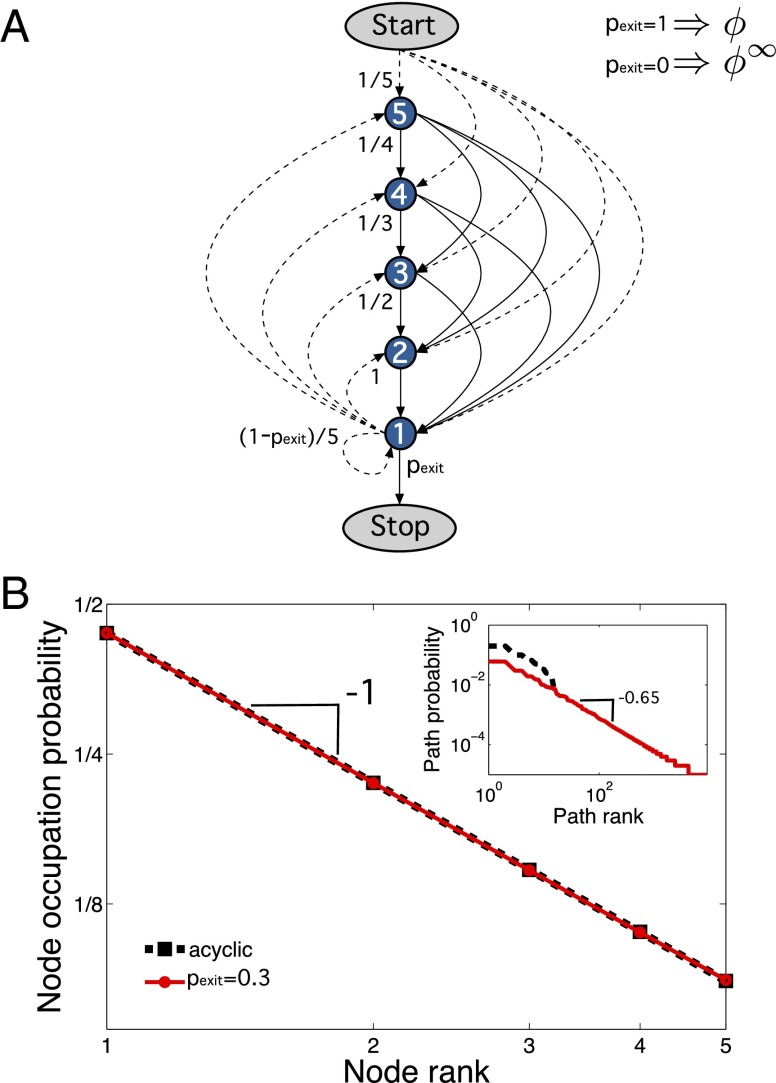Fig. 5.
(A) SSR processes seen as random walks on networks. A random walker starts at the start node and diffuses through the directed network. Depending on the value of , two possible types of walks are possible. For , the finite ( possible paths) and acyclic process ϕ is recovered that stops after a single path; for , we have the infinite and cyclical process, . For we have the mixed process, . (B) The occupation probability for is unaffected by the value of . The repeated ϕ (dashed black line) and the mixed process with (solid red line) have exactly the same occupation probability , which corresponds to the stationary visiting distribution of nodes in the network by random walkers. (Inset) Rank distribution of path-visit frequencies. Clearly they depend strongly on . Whereas the acyclic ϕ produces a finite distribution, the cyclic one produces a power law, matching the theoretical prediction of ref. 27. For the simulation we generated sequence samples and found distinct sequences for .

